Planting For Shade Containers: Choose and Maintain Effective Container Plants For Shade
Shady spots may seem like a gardening struggle, but you can grow gorgeous plants in pots. We reveal the best container plants for shade – and how to keep them at their best
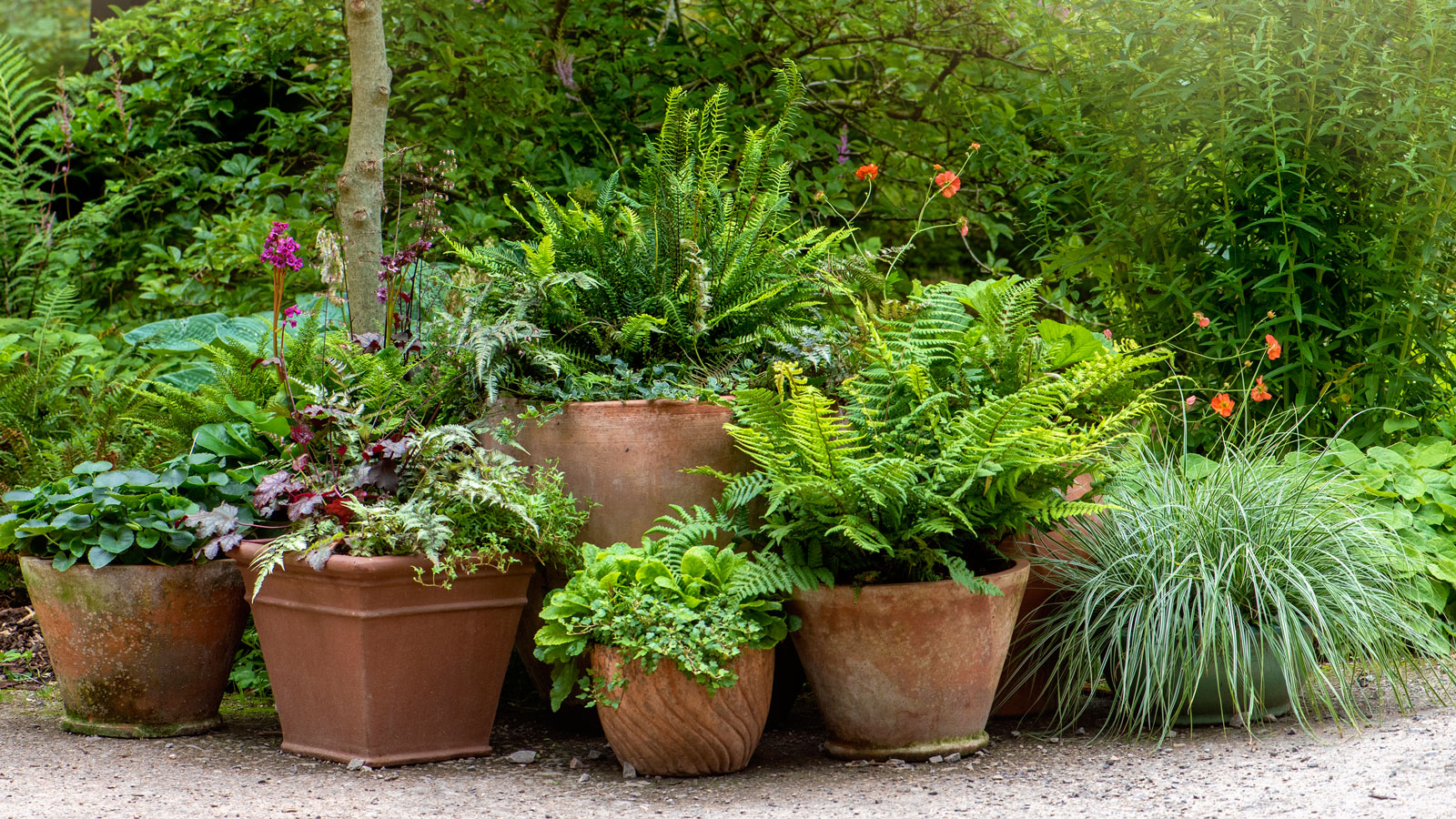

Finding the right container plants for shade can pose a challenge. Shade locations of the garden can be some of the hardest areas to populate with plants. There are plenty of selections, but they must be tailored to your zone and other conditions. When choosing potted plants for shade, your container gardening selections must be able to tolerate container living and have containers large enough to house them when mature. Shade container plants may be standalone species or combinations of flora that complement each other and have the same growing requirements.
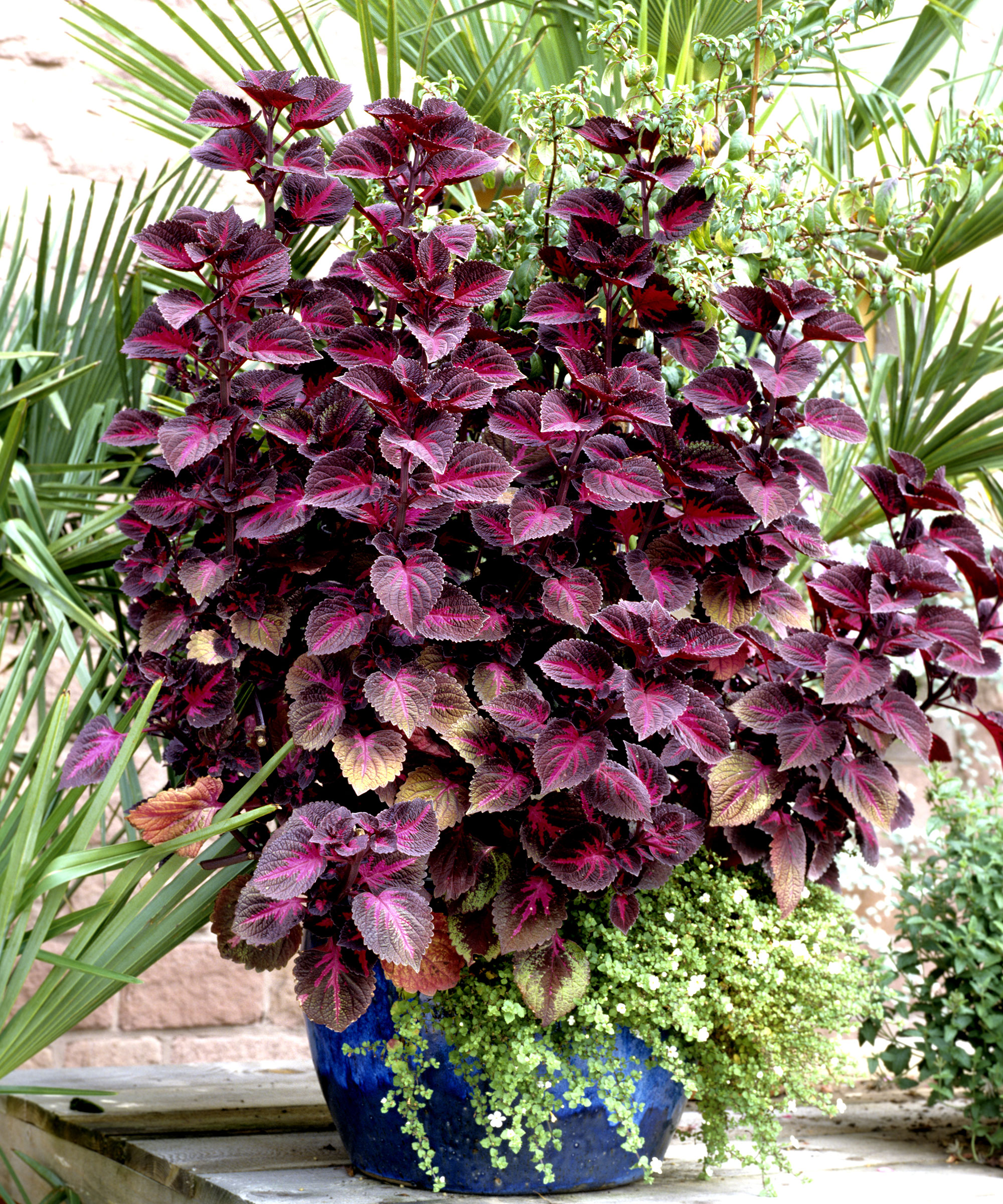
Choosing The Best Container Plants for Shade
Container plants for shade will need the right pot, soil and considered care. Some gardeners start with a favorite planter then choose plants, while others select plants then the container. Whichever way you go, the two factors should be harmonious. One of the biggest container mistakes you can make is to misjudge this partnership.
A large container with an impactful specimen provides a wow factor, while a hanging basket draws nature into a space. Containers with a bounty of different species may enliven or calm, depending upon the types of plants. Container plants in shade that are grouped together need the same watering and nutrient needs for success.
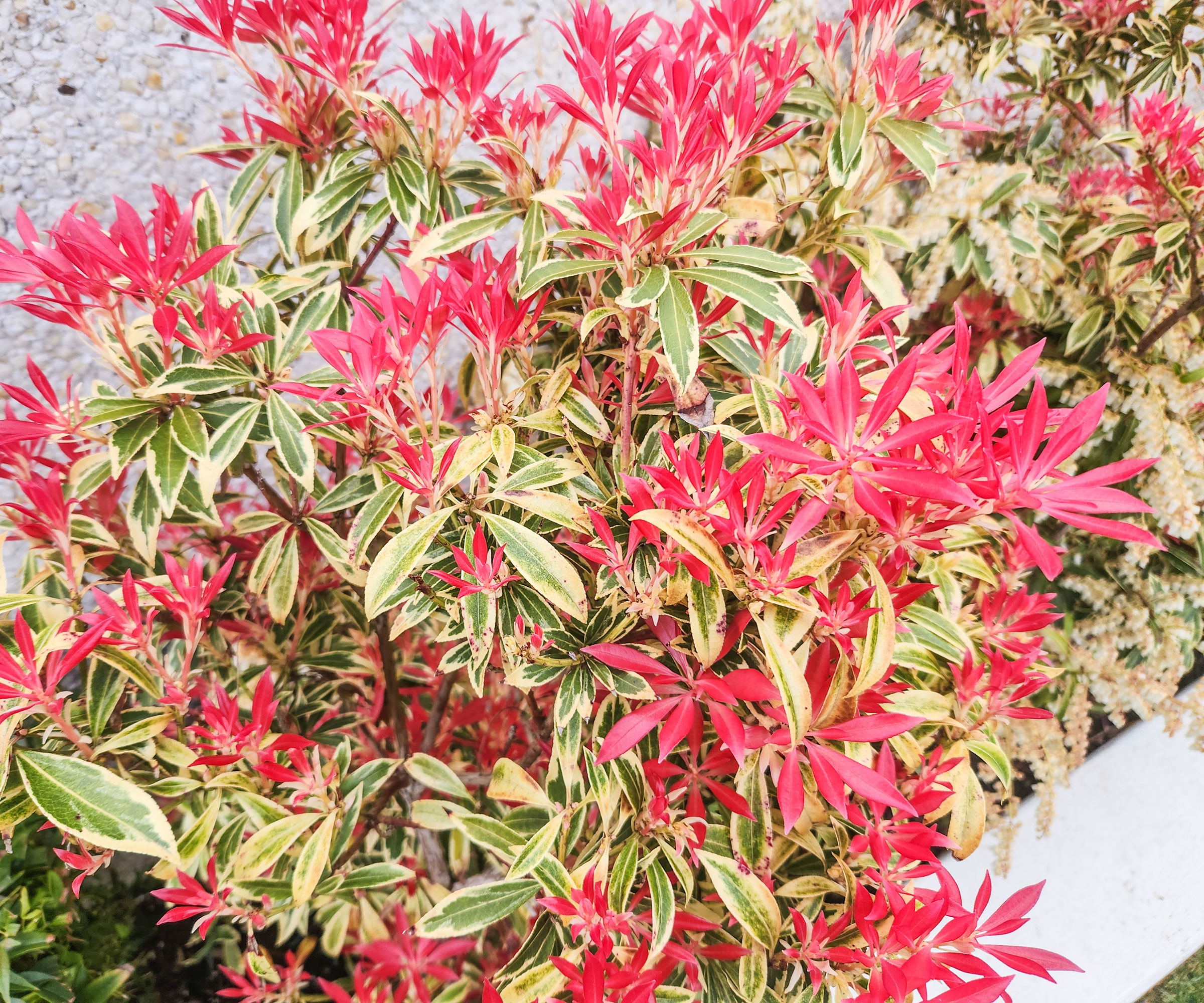
Single Specimen Shade Container Plants
Larger shade-loving plants for containers will draw the eye and make a focal point for other outdoor decor. Many of these options will need to be transplanted to a shady location of the garden when they get too big, but for years they can provide beauty to a low light area. Some of the best low maintenance shade plants for pots include:
- Witch Hazel: A classic darling of the garden. It is one of the first plants to bloom in late winter. These little trees like well-draining, moist soil, so select a good potting soil. Choose a container that will accommodate its moderately fast growth rate. In northern climates, wrap the container with burlap or move it to shelter to protect the roots from freezes.
- Pieris: A medium sized shrub with fantastic foliage. Select a container slightly larger than the plant and use well-draining potting soil. With a little dappled light, this plant will produce delicate, bell-like clusters of tiny flowers in spring. Most species grow three feet (0.9m) tall. They like to be kept moist and seldom need pruning.
- Hosta: Well-known shade plants grown for their amazing foliage. They will also produce lovely little flower spires. Although there are some hosta breeds that grow very large, many are suitable for containers and doing so can help protect them from slug damage. There are many sizes and leaf hues from which to choose. Protect the container from winter freezes.
- Fothergilla: This bush produces bottle brush type flowers in spring in hues of creamy white to almost yellow. It is a medium-sized shrub that should thrive in a container. Make sure the planter is twice as wide and deep as the root mass. Install the plant with the base of the stem just above the soil level.
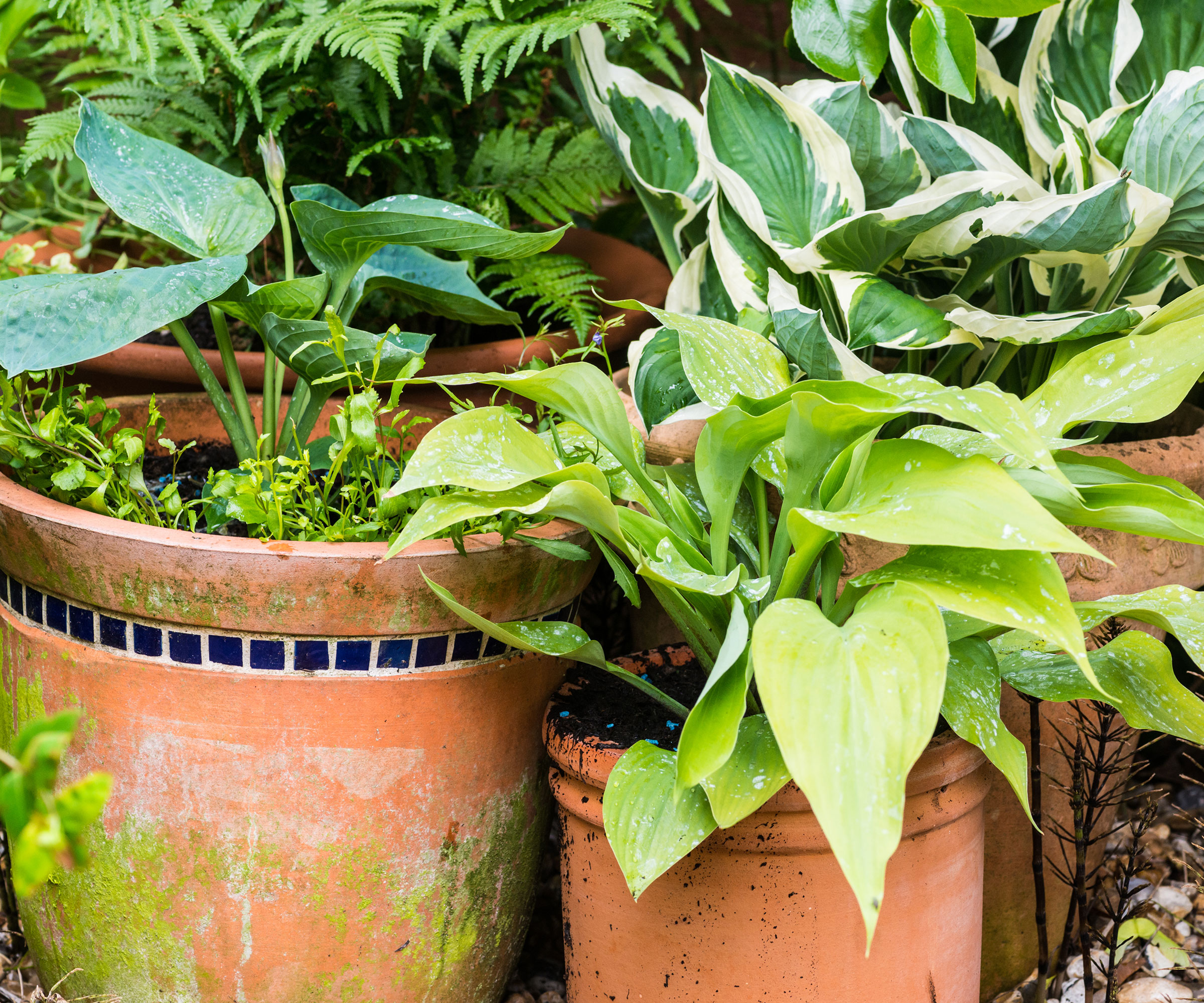
Grouping Shade Loving Plants in Containers
The choices you make in a combination planter will depend on the zone. Perennials combined with annuals to add dimension can make a lively design. For evergreen appeal, choose plants that are hardy and don’t drop leaves or needles. When you group plants, consider how large each will be as it matures. Keep tall varieties at the back or center, then front or surround them by smaller species and trailing plants.
The most common planting scheme is known as thriller, filler, spiller in gardening terms. This refers to the large specimens, thrillers, which bring color from foliage or flower, with fillers to pad out the interest, and spillers the trailing plants to soften the edges of the container. Some ideal options for shade container groupings include:
- Asparagus ferns have often been grown as indoor plants, but they perform well in warm to temperate regions in full-shade outdoor containers.
- Creeping Jenny is a trailing plant that will gently spill over the sides of the container.
- Southern woodfern is an evergreen perennial with the soft foliage of most ferns.
- Astilbe is a medium-sized perennial. Growing astilbe plants will reward you with feathery leaves and a plume-like flower.
- Foxgloves are native, quite hardy, and unfussy about their soil. They will tend to spread in some regions, however.
- Coral bells are low-growing plants with scalloped leaves in many colors. Also known as heuchera, coral bells produce delicate little flowers in spring.
- Impatiens are excellent filler plants with a wide variety of flower colors. They also come in several forms.
- Brunnera is one of the prettier foliage perennials. Silvery heart-shaped leaves with green edges are the standout feature. Small blue flowers arrive in spring.
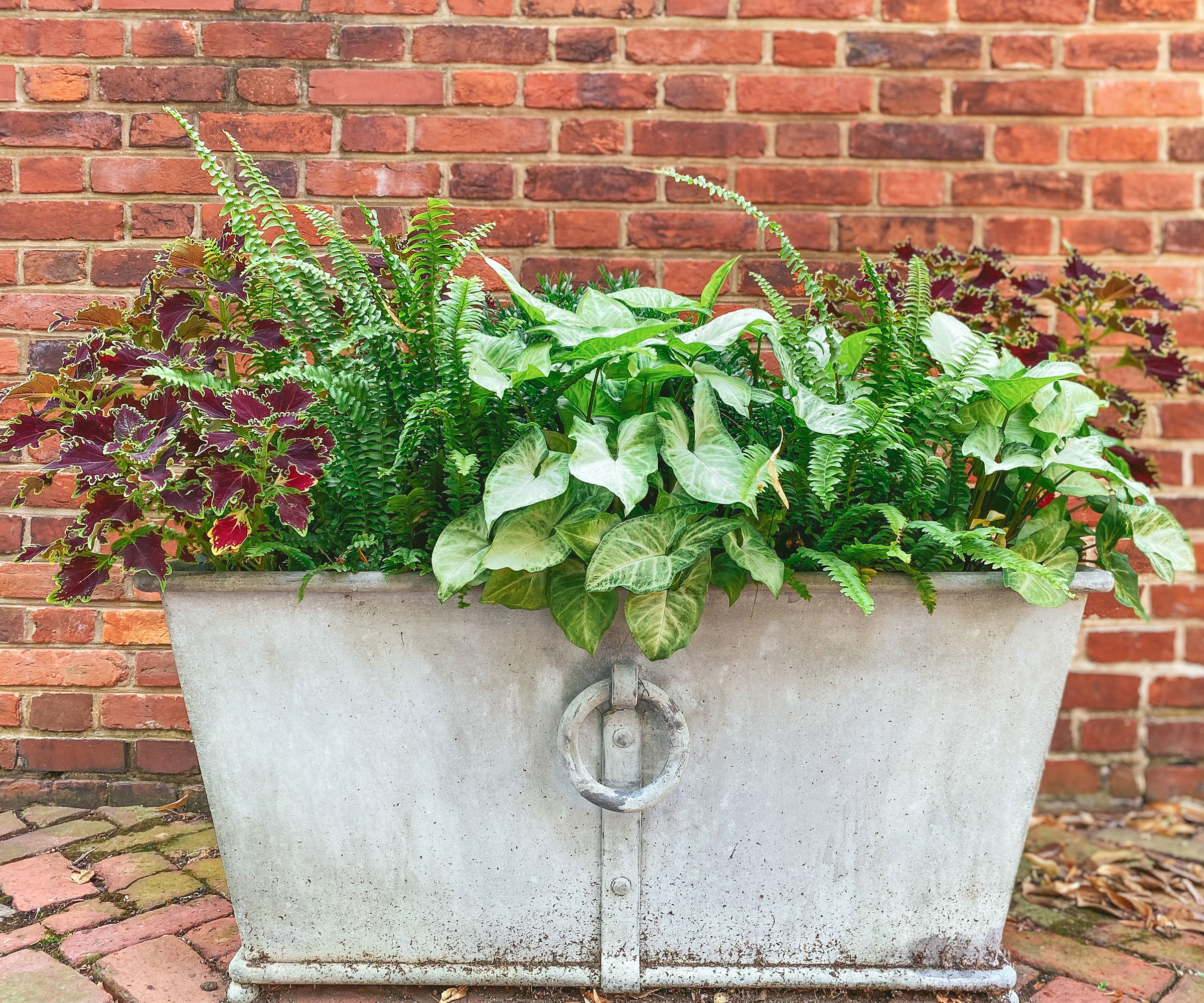
Maintaining Your Shade Container
As the plants grow and get larger, it may be necessary to increase container size in a year or two. Use good potting soil with some perlite to enhance porosity and help hold moisture. Containers dry out much more quickly than in ground plants. In high heat container situations, it may be necessary to water a couple of times per day.
Sign up for the Gardening Know How newsletter today and receive a free copy of our e-book "How to Grow Delicious Tomatoes".
Deadhead flowering plants to encourage more blooms and keep the pot pleasant. Remove dead or diseased material immediately. Fertilize at least once per year. If you feed potted plants more, it will be necessary to flood the pot and allow excess salts to drain from the drainage holes. In cold regions, protect sensitive or half-hardy plants by moving the planter to shelter or wrapping the container in frost-free fabric, blankets or burlap.
Frequently Asked Questions
Are There Any Special Tips That Benefit Container Plants for Shade?
Hot pink and white help make the colors of other plants look brighter. Use one of these colors at least once in your shade container. Plants for shade containers should be three heights: tall, middle and low. A tall plant, such as a fern, should go in the center. Around that, place mid-size plants, such as fuchsia and hosta, then low plants, like impatiens and forget me not. Use at least three plants for visual interest.
Do Container Plants Need Special Watering in Shade?
Shade containers are often located under large trees and structures, which means that rainfall may not make it to them. Be sure to check if your container garden for the shade is getting enough water, even if it has rained recently. However, container plants for the shade are more susceptible to overwatering, as they are not in the direct line of the drying sun. Check and assess their need for water before watering. It helps to put plants with similar water needs in the same container.
This article features products available from third party vendors on the Gardening Know How Shop.

Bonnie Grant is a professional landscaper with a Certification in Urban Gardening. She has been gardening and writing for 15 years. A former professional chef, she has a passion for edible landscaping.
